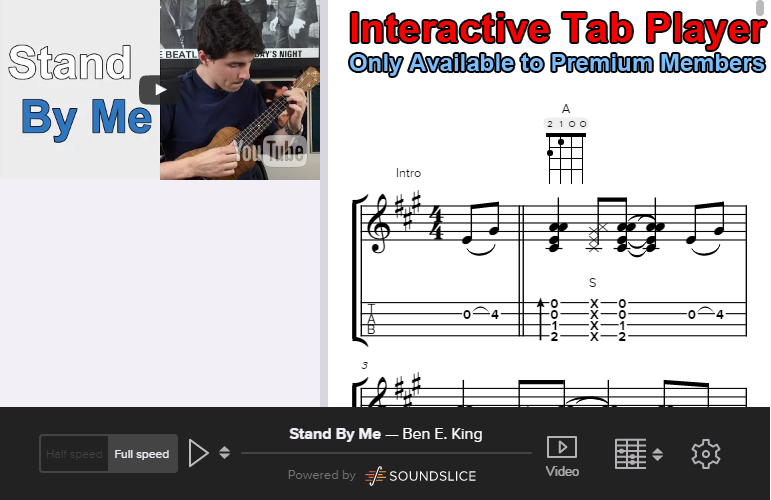Spice Up Your Rhythm Playing – EP010
Helpful Tips
In this lesson, you’ll learn 8 ways to vary your rhythm playing. The big takeaway here is that these concepts can be applied to any song, helping you to expand your rhythmic playing vocabulary. With our example tune, we have a chord progression that spans 16 bars in length. The first 16 bars through the form is meant to introduce you to the chord progression. As such, you’ll be keeping the rhythm simple by using the beginner-friendly, Island Strum Pattern.
The second time through the form (bars 17-32), is when you’ll be spicing up your rhythm by incorporating different playing styles, rhythmic hits, and techniques. Let’s break these concepts down:
1) Island Strum: Bars 1-16 – A beginner-friendly strum pattern. Keep in mind, this song has a swung rhythmic feel.
2) Fingerpicking: Bars 17-24 – Our first rhythmic variation has us applying a 3 finger, fingerpicking approach; essentially, we’ll be fingerpicking a couple patterns out of the chord progression. We’ll also be adding a slide technique to jazz things up.
3) Chucking: Bars 25-26 – We’ll be adding a backbeat on beats 2 and 4, which creates a pleasant percussive effect.
4) Rubato (Tempo Changes): Bars 27-28 – Rubato means that we do not have to strictly adhere to a steady tempo. As such, we’ll be slowing down by about 20 BPM in bar 27, allowing us to heavily accent a quarter note triplet strum. In bar 28, we’ll increase tempo by about 15 BPM, before returning (marked as: A Tempo on the sheet music) to the original tempo in bar 29.
5) Plucked Staccato: Bars 29-30 – One way we can alter the quality of a note (or chord) is by changing its duration. For example, a note can be played with staccato (short, detached) or legato (long, connected). We will be applying staccato to the chords in this section.
6) Rasgueado: Bar 31 – Rasgueado is a strumming technique that is executed using the fingernails of the strumming hand in rapid succession to produce a big burst of sound. The right hand fingers start in a closed position (claw shape) and then take turns snapping out and strumming down the strings in this order: pinky, ring, middle, index. By using one digit for each strum, multiple strums can be done more quickly than usual. If you are new to this technique, check out this lesson to learn the mechanics behind it.
7) Triplet Strum: Bar 32 – An advanced strumming technique that uses 3 strums, set in an 8th note triplet rhythm. Learn the mechanics behind this technique here; and click here if you need an explanation on the rhythm behind 8th note triplets.
8) Fade Out: Bars 33-40 – Just as some of your favorite songs use a computer to fade the band out at the end, we can recreate this effect in real life; giving us a creative and fun way to end tunes!
Part 1 – Performance & Free Lesson

